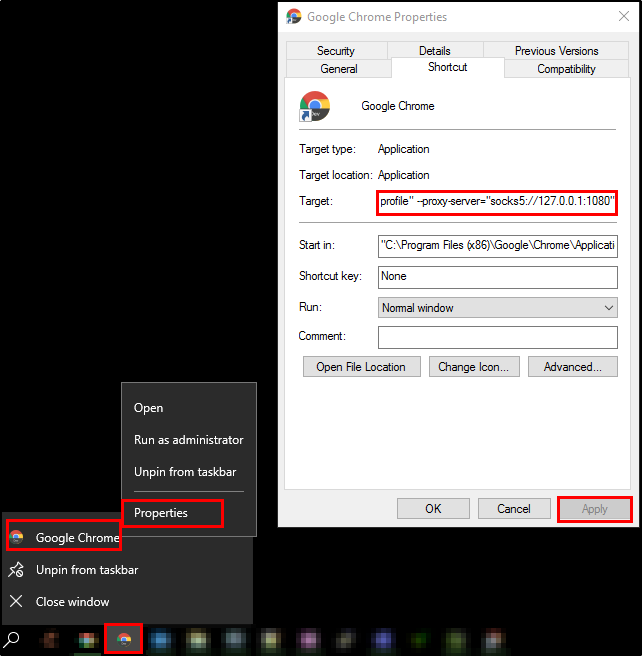

This is a more manual solution where you redirect the entire web traffic through the remote server. Where is an entry of your ssh config file. Applications/Google\ Chrome.app/Contents/MacOS/Google\ Chrome -proxy-server=socks5://localhost:$ -user-data-dir=~/chromesession You can put these two operations in a convenient function for your bashrc Applications/Google\ Chrome.app/Contents/MacOS/Google\ Chrome -proxy-server=socks5://localhost:1337 -user-data-dir=~/chromesessionĪ new Chrome window will open: in that window (but not elsewhere) it’s like you’re browsing from the remote location. You need to specify a cache directory, otherwise, it interferes with your main Chrome session: Ssh -D 1337 -f -C -q -N open Google Chrome using that SSH tunnel as a proxy. First, open an ssh connection to your server specifying the port number (in this case 1337 but you can pick whatever you want): The best option I found was to open a dedicated Chrome session through an SSH tunnel. Option 1 (best): a dedicated Chrome session This is useful to login into a University machine with your RSA key and then browse the internet as if you are on campus. Which allows to your access services running on remote system or network via SSH network, where you don’t have directly access via port.This is a short guide to browse the internet using a local browser via a remote server.
#Chrome setup ssh tunnel windows
This tutorial helped you to setup local and remote SSH tunnel via the Putty application on Windows server. Next, In the Destination field, enter the destination address followed by the port number.In the Source port field, enter the port number to use on your local system.Select Remote to define the type of SSH port forward.Remote forwarding represents an inversion of the local forwarding process as described above. The Remote forwarding allows a remote system to access resources from your local machine. The tunnel will work until the SSH session is active Connect the SSH session to make the tunnel.

Verify the details you added and press Add button.Select Local to define the type of SSH port forward.Navigate to the Connection > SSH > Tunnels. In the left sidebar under the Category options.Make sure the connection type is set to SSH.Īdd hostname of the SSH server you want to access remotely. In the Session windows, enter the hostname or IP address and port number of the destination SSH server. Start the PuTTY application on your desktop.You can configure local SSH tunneling using the following steps: You can also reverse the process and access resources of your local system from remote machine. The first option shows you option to forward your local port to remote network to access there resources. The Tunnel provides you port forwarding from both sides. Once you forwarded your localhost port to the port listening on remote network, you can directly access the the remote service by accessing configured port with localhost. With the help of SSH tunnel you can access resources available on other ports, which is not directly accessible from your system. It also provides you option to create SSH tunnel to provide access to resource within the trusted internal network. Most of the Linux system users are aware and use to connect remote system running SSH server. PuTTy is a user-friendly SSH client for the Windows system.


 0 kommentar(er)
0 kommentar(er)
